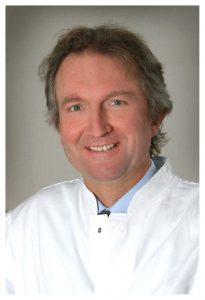
Among the numerous interesting data presented during this meeting, what are your highlights of the EADV 2018, what is not to miss?
Prof. Röcken: The highlights this year were probably the plenary lectures, where we had world famous clinicians who brought us the latest insights into HIV infection, atopic dermatitis and infection, melanoma therapy, microbiome of the skin, and, most importantly, also the skin fragility syndromes including new insights into the possibilities of gene therapy.
Are there new features in EADV 2018 in the way this meeting is organised?
Prof. Röcken: In principle, we more or less preserved the structure we established for this meeting four years ago. Normally, congresses are organised in different workshops and symposia, without a specific structure. In contrast, we set up a structured training according to different indications, e.g. atopic dermatitis, psoriasis, non-melanoma skin cancer, HIV, or skin infections. Attending dermatologists get the full insight into this indication starting from early epidemiology, diagnosis histology, microbiology of the skin diseases, and then the classical and new treatment options. Every indication is done on three different levels: one for beginners, one for practising dermatologists, and, of course, one for teaching experts. In this way, every participant can choose a programme tailored to his or her specific needs and will get the appropriate and highest training possible.
Do you think it is still worth visiting a congress despite all the online training possibilities that exist nowadays?
Prof. Röcken: Very much so. And the dermatologists obviously feel the same. During the previous two years, we have seen an increase of 3,000-4,000 participants, and 2,000 more EADV members. Our annual meeting was the largest worldwide congress in dermatology with a total of 13,000 participants. So, this was a clear success, and more and more people are attending our meeting.
With so many new biologics entering the treatment arena (at the moment in psoriasis, and in atopic dermatitis in the near future), how do you choose the right agent for the patient?
Prof. Röcken: For psoriasis, we now have more than a dozen different drugs, and also increasingly more drugs for atopic dermatitis. And there are the IL-1 antagonists and TNF-α antagonists for other inflammatory diseases. The goal in teaching healthcare professionals is exactly this: what to do first, and how to develop a treatment algorithm; what are the classic treatments, what is the initial treatment and what is the maximal treatment – when to do what. And how and which biological to use under certain conditions. The worst thing to do is to just exchange one biologic with another, without a plan. We will need an escalation ladder, and the idea is to train people to make the correct treatment decisions, and to gradually move from the regular treatments to the more aggressive/expensive ones.
How can the problem of undertreatment be solved?
Prof. Röcken: The problem is that many patients are not taken care of by dermatologists, or they are with dermatologists who lack up-to-date training. This is why we created classes at three levels at the EADV meeting. Train the dermatologist in order to bring them up-to-date with novel treatments. Better education is a successful approach to solve the problem of undertreatment. First, the patient should really see a dermatologist, and then the dermatologist has to be well trained.
Posted on
Previous Article
« Letter from the ESC Congress Programme Committee Chair Next Article
Letter from the Editor »
« Letter from the ESC Congress Programme Committee Chair Next Article
Letter from the Editor »
Table of Contents: EADV 2018
Featured articles
Letter from the Editor
Interview with Prof. Martin Röcken
Related Articles
September 16, 2018
Letter from the Editor
© 2024 Medicom Medical Publishers. All rights reserved. Terms and Conditions | Privacy Policy

